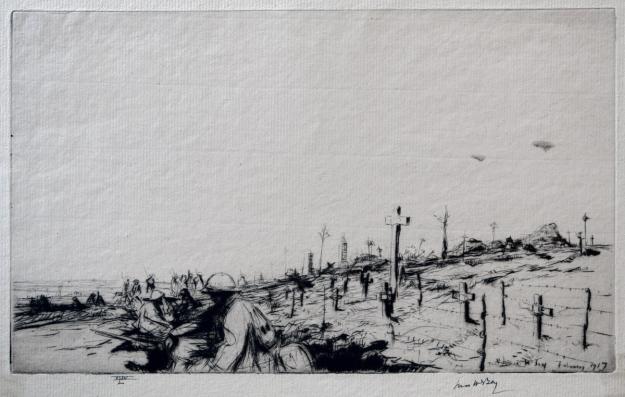- Reading Public Museum
Open 11a-5p DailyAdmission - Neag Planetarium
Show ScheduleAdmission - Arboretum
Open everyday from sunrise to sunset

In 1916, McBey was appointed an Official War Artist for Britain. He was first stationed in France at Boulogne and Rouen. In the spring of 1917, McBey was at the Somme Front, a focal point for some of the most disastrous battles of WWI. It was here that he created Français Inconnus. Concentrating not upon the actual conflicts but upon their devastating aftermaths, McBey delivered his poignant statement through the blasted landscape and the exhaustion of the surviving soldiers. The tragedy of Français Inconnus is further conveyed by its title -- translated into English as, "The Unknown Frenchmen." Rough wooden crosses behind barbed wire mark their graves.
McBey was later appointed to the Palestine Expeditionary Force in the Sinai Desert. The sand-filled horizons and landscapes produced a different, more poetic art. After the war, McBey's etchings and drypoints continued to receive critical acclaim. The greatest work of his post-war period is considered to be his thirty-two Venice etchings (the first dating from 1924) which scholars now regard to be of equal standing to the ‘Venice Set’ by Whistler.